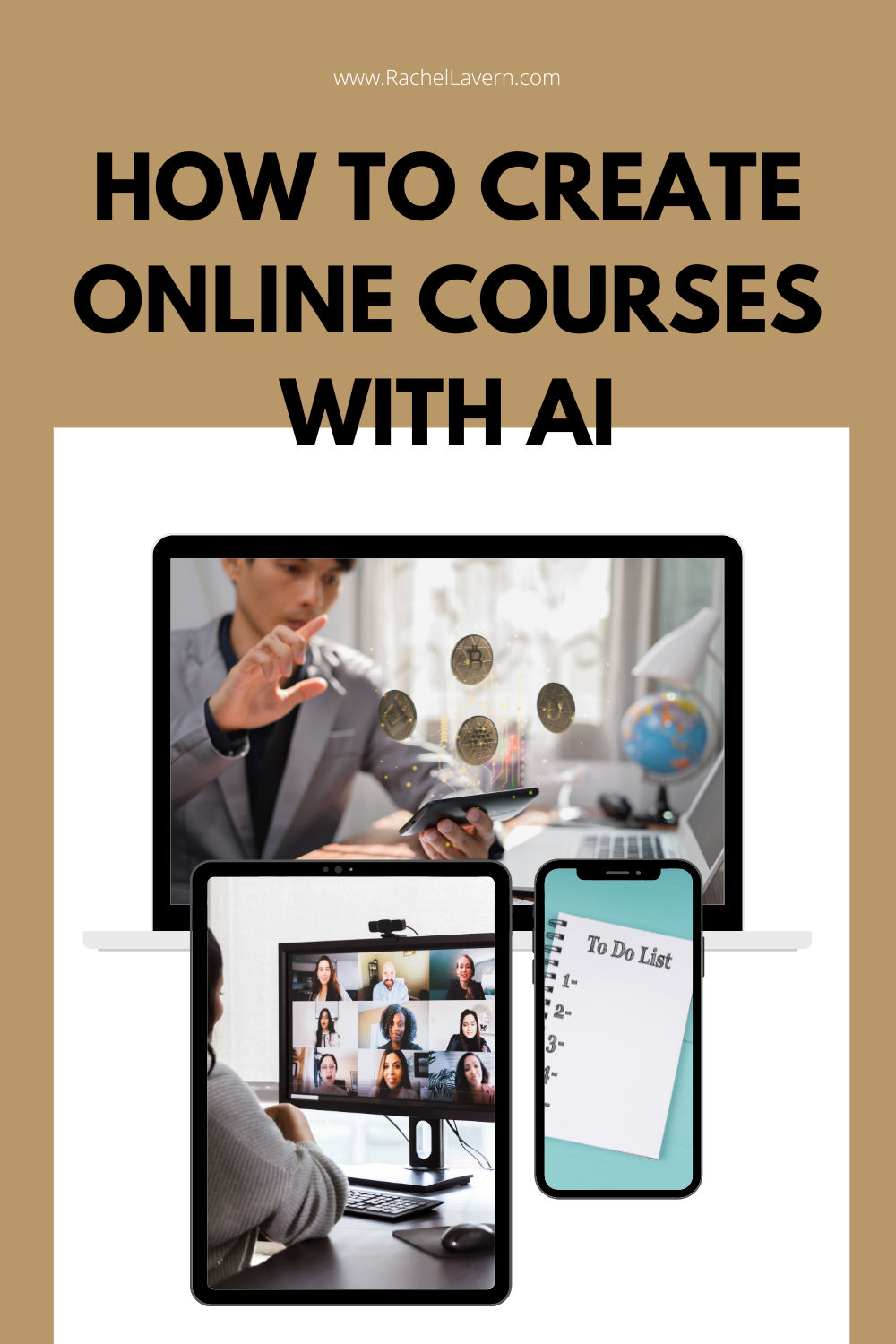As an entrepreneur, you're always looking for new ways to grow your business and reach your goals. One popular strategy is to create an online course and monetize your expertise and knowledge. However, building an online course from scratch can be a complex and time-consuming process. But with the help of artificial intelligence, you can streamline many of the steps involved and make the process much easier. In this blog post, we'll outline a step-by-step process for building a profitable online course with the help of AI.

Step 1: Identify Your Niche
The first step in building an online course is to identify your niche. This is the specific area of expertise you'll be teaching, and it should be something that you're passionate about and knowledgeable in. AI can help you identify your niche by analyzing data from social media, search engines, and other sources to determine what topics are currently in demand and what people are interested in learning about.
But be careful that your course is not TOO niche. It can be tempting to think that the more niche your topic is, the better. Just because you will be offering something that no one else is teaching, that won't necessarily make you the go-to expert in your field.
A highly niche topic can be a great selling point for your course, but it can also be a major drawback. You may have difficulty generating enough interest in your course to make it financially viable if your target audience is too small. Be sure to understand how many people are likely to be interested in your course topic before you invest a lot of time and money into it. It's important to strike a balance between a topic that's unique and interesting yet not too niche that it's hard to generate interest or make money from. For instance, a course on the history of a small, local town might be too niche to generate much interest and revenue, whereas a course on the history of a region or state may be just the right level of interest to generate enough paying customers.
Step 2: Outline Your Course
Once you've identified your niche, you'll need to create an outline for your course. This should include an overview of the topics you'll cover and the order in which you'll cover them. AI can help you create an outline by analyzing the most popular and successful online courses in your niche, and using that data to inform your own course structure.
First, AI can analyze the most popular and successful online courses in your niche by looking at factors such as course content, format, length, and audience engagement. This data can be used to identify the topics and approaches that are most effective in your niche, and to determine what type of content resonates best with your target audience.
Next, you can create an online course with the help of AI because it can use this information to help you create an outline for your own course. By using data to inform your course structure, you can ensure that your course covers the most important topics, is well-organized, and is structured in a way that will maximize engagement and retention.
For example, if AI analysis reveals that video lessons are the most popular format in your niche, you might decide to structure your course around a series of video lessons. On the other hand, if AI analysis shows that written materials are more effective, you might decide to structure your course around a series of written guides, e-books, and other materials.
Step 3: Create Your Course Content
With your outline in hand, you can start creating your course content. This can include video lessons, audio recordings, and written materials. AI can help you create your course content by using natural language processing to generate scripts and outlines for your videos, and by using text-to-speech technology to create audio recordings for your course.
1. Natural Language Processing (NLP) to Generate Scripts and Outlines for Videos: NLP is a sub-field of AI that deals with the interaction between computers and humans using natural language. Entrepreneurs can use NLP to generate scripts and outlines for their video lessons by inputting key points and topics they want to cover in the lesson. NLP algorithms can then analyze the input and generate a well-structured script that includes the main points, subtopics, and any supporting information. This can help entrepreneurs save time and effort, as they no longer have to spend hours writing and revising scripts for each video lesson.
2. Text-to-Speech Technology to Create Audio Recordings: Text-to-speech technology is another AI tool that entrepreneurs can use to create audio recordings for their courses. With this technology, entrepreneurs can input written content, such as e-books or written guides, into the system and the AI will generate an audio recording of the text. This allows entrepreneurs to create engaging and high-quality audio content without having to invest time and resources into recording and editing audio files.

Step 4: Launch and Promote Your Course
Once your course is complete, it's time to launch and promote it. AI can help you with this step by analyzing your target audience and using that information to target your marketing efforts more effectively. You can also use AI to optimize your website and landing pages to increase conversions, and to create and manage your email marketing campaigns to promote your course and engage with your audience.
The following claim is directly from ChatGPT:
An entrepreneur can use artificial intelligence (AI) to optimize their website and landing pages to increase conversions. AI algorithms can analyze data from the website, such as user behavior, to identify areas for improvement. For example, AI can analyze the performance of different landing pages and suggest changes that could increase conversion rates, such as altering the layout, tweaking the messaging, or adjusting the call-to-action. Additionally, AI can also be used to personalize website experiences for individual users, delivering relevant content and offers that are more likely to convert. AI can also automate A/B testing, making it easier for entrepreneurs to quickly identify which changes result in the biggest improvements in conversion rates. By using AI to optimize their website and landing pages, entrepreneurs can improve the user experience and increase conversions, ultimately leading to growth and success for their business.
Step 5: Monitor and Improve Your Course
Finally, it's important to monitor and improve your course over time. AI can help you with this by analyzing data from your course to determine what's working well and what needs improvement. You can use this information to make tweaks and updates to your course, and to keep your audience engaged and motivated.
AI claims to be able to analyze data from an online course to determine what is working well and what needs improvement. ChatGPT can process and analyze large amounts of data, including information about course engagement, student performance, and feedback. By using natural language processing and machine learning algorithms, ChatGPT can identify patterns and insights in the data that may be difficult for humans to see. For example, ChatGPT could analyze data to determine which lessons are most engaging, which topics students struggle with the most, or which types of assignments receive the best response. This information can be used to inform course improvements and create a more effective learning experience for students.
In conclusion, building a profitable online course is a complex and time-consuming process but, with the help of AI, you can streamline many of the steps involved and make the process much easier. From identifying your niche to launching and promoting your course, AI can help you reach your goals and build a successful online business.










